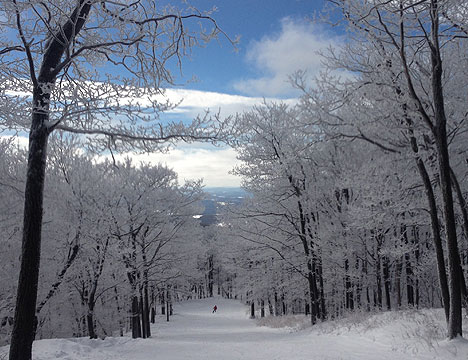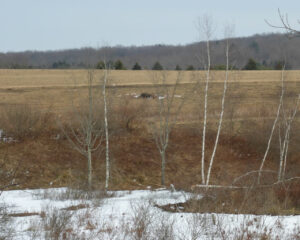The Lehigh Trail
 The recent storm provided enough snowfall for the Lehigh Trail on Elk Mountain to be opened. This trail, the longest of all, is beyond the reach of snowmaking facilities. It winds leisurely around the North Knob’s shoulder, offering spectacular views of the South Knob, and beyond.
The recent storm provided enough snowfall for the Lehigh Trail on Elk Mountain to be opened. This trail, the longest of all, is beyond the reach of snowmaking facilities. It winds leisurely around the North Knob’s shoulder, offering spectacular views of the South Knob, and beyond.
Many years ago, before being re-routed, the Lehigh actually went uphill for a bit on it’s way to rejoining the Delaware trail further down the mountain.
Several very large rocks are precariously perched on either side of the trail. A close examination reveals parallel grooves in these rocks; seemingly the result of glaciers dragging debris as they extended and retreated during the last ice age.
The truth about these rocks is much more compelling. They are sedimentary rocks, having been created by sand and earth deposited at the bottom of an ancient delta. As the course of the delta shifted, debris settled in one direction, another, and another, layer upon layer. The sediment eventually hardened into rock. The changes of the water’s direction countless years ago is recorded in these rocks and is evident today.
As geological forces shaped the continents, the floor of the delta was thrusted upward, creating what was once one of the tallest mountains on Earth.
Hard evidence of such drastic change casts a different perspective on the hill that brings us such joy. Now, a modestly tall mountain, Elk was once was once lower than sea level; it was also part of a range higher than the Himalayas are today.
This Wanderlist was handcrafted at 1620 feet.


